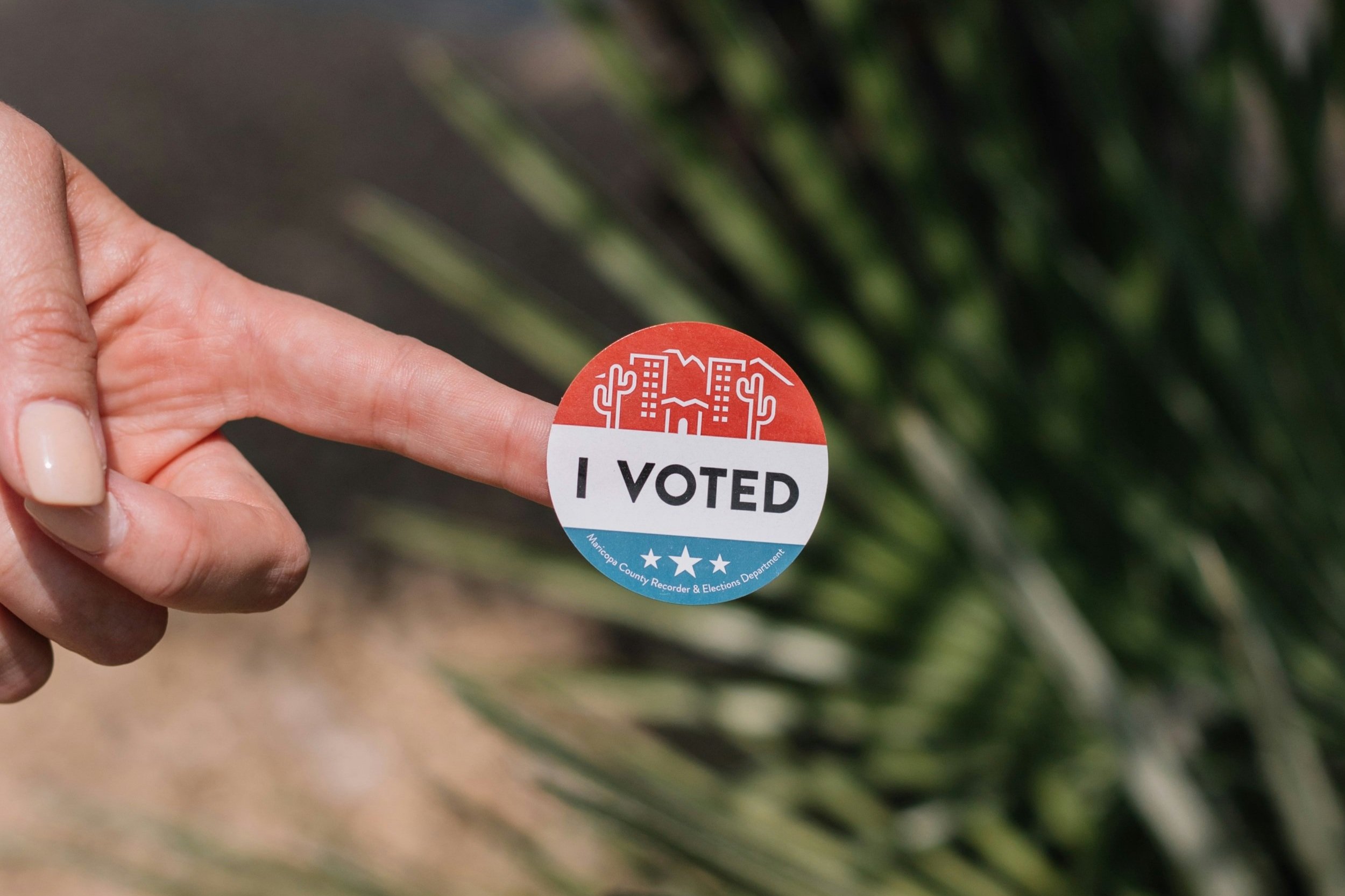Campaign Smarts: What Nonprofits Can Steal from Political Marketing Playbooks
This year’s election campaigns have been fast, creative, and attention-grabbing. But what can nonprofits learn from these tactics? In an attempt to answer all these questions surrounding the intersection of the election and marketing, we sat down with our founder, Katie Stanton, to get her expert take on what this election cycle can teach us about nonprofit marketing.
Katie Stanton, the founder of The Good Lemon, has over 15 years of experience in communications, marketing, and social causes. From global health initiatives to racial equity and women's leadership, she’s worked with top nonprofits and philanthropies, including the YWCA USA and Vital Voices Global Partnership.
From rapid response strategies to embracing a playful tone, Katie’s insights offer invaluable lessons for the nonprofit world. Let’s dive in!
Rapid Response Time
Many of Harris’ TikTok videos are conceived, created, and posted in about half an hour. How can nonprofit teams mimic this approach? What skills and tools would help?
“It’s about trust. You need a nimble team that can adapt quickly without sacrificing your mission’s core message.” - Katie
Nonprofits often face slower approval processes, multiple layers of oversight, and careful consideration of messaging. However, election campaigns show us the power of immediacy. In a digital world where trends shift rapidly, nonprofits need to embrace agility. By trusting your communications team and empowering them to make quick, informed decisions, you can be part of real-time conversations that resonate with your audience.
To adopt this strategy, nonprofits should consider refining their internal processes. Reduce unnecessary approvals, equip your team with project management tools such as Asana and/or internal messaging platforms like Slack to focus on a clear set of brand guidelines. The goal is to ensure your team feels confident creating rapid, on-message content without waiting for days on approvals.
Authenticity, Playfulness, and Internet Culture
Campaigns are adopting a playful approach, chasing virality with upbeat, oddball content. How could nonprofits loosen up while still being taken seriously?
“Playfulness doesn’t mean unprofessional. It’s about creating content that resonates at the right time in a relatable way.” - Katie
The current election season shows the importance of authenticity and relatability in digital communication. For nonprofits, this doesn't mean diluting your mission or making light of serious topics—it’s about knowing when to show your human side and connect with your audience on a more personal level. Kamala Harris has embraced her endorsement from pop singer Charli XCX, using this to create branding behind her campaign. By embracing humor, pop culture references, and even internet trends, your nonprofit can cultivate a stronger emotional connection with supporters, particularly younger audiences.
An example might be using memes or light-hearted messaging in social media posts or email campaigns, but tailoring that content to fit your mission. As long as you stay true to your core values, showing a playful side can help break down barriers and engage people who may not yet be familiar with your cause.
Fandom of Your Brand & Sounding Like a Friend
What communications approach should nonprofit marketing teams take to keep up with all these trends?
“Think of your audience as fans of your mission, not just as donors or followers.” - Katie
One of the most effective tactics seen in this election cycle is the ability to foster a sense of community through language that feels personal and conversational. Rather than speaking to supporters in a formal, detached manner, campaigns are creating a fan-like culture where audiences feel closely connected to the cause.
For nonprofits, adopting this approach can be a game-changer. Instead of thinking of your audience as separate from your organization, view them as part of the movement. Engage them in a way that encourages dialogue, whether through personalized thank-you videos, social media interactions, or casual yet informative email updates. The key is to create a sense of belonging, as if supporters are more than just donors, they’re part of your story.
Trolling and Provocative Content?
Some campaign content is pretty provocative. Do you see a way for nonprofits to grab attention like that without compromising their values?
“Being bold is important, but nonprofits should always prioritize their values over pure shock value.” - Katie
While election campaigns often use trolling or provocative tactics to grab attention or sway public opinion, nonprofits must be more thoughtful in their approach. Attention-grabbing content can be effective, but it must be done with care. Provocative messages should always align with the core values of your nonprofit and avoid alienating key supporters.
This doesn’t mean nonprofits can’t be bold. Take a stand on important issues, challenge outdated beliefs, and use your platform to spark conversations. However, avoid venturing into shock for the sake of virality. The key is balance, provoking thought, and rallying an audience around your cause… not inciting confusion or outrage. When done well, bold messaging can elevate your nonprofit’s voice without compromising its integrity.
Conclusion
The lessons from this year’s election campaigns offer invaluable insights for nonprofits aiming to adapt in a fast-paced digital world. From embracing rapid response strategies to finding the right balance between playfulness and professionalism, these tactics can help organizations engage their audience in more dynamic and meaningful ways.
But we’ve only just scratched the surface. In our next installment, Katie will dive even deeper into the strategies behind successful election campaigns, offering more lessons on how to build a strong digital presence, foster community, and create content that truly resonates. Stay tuned for part two of our Election Marketing Lessons mini-series!


